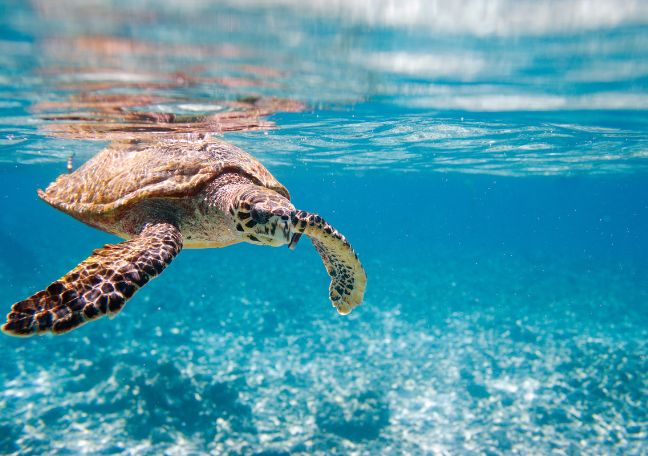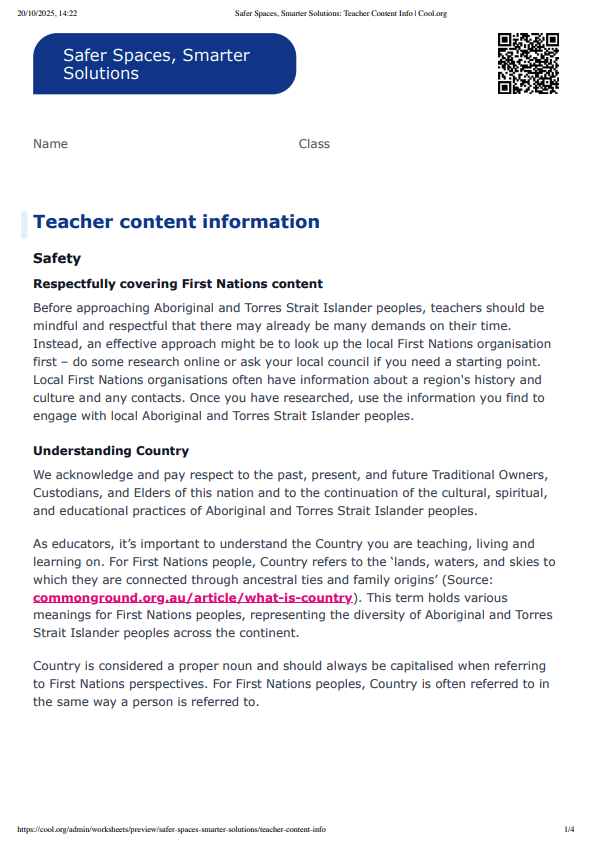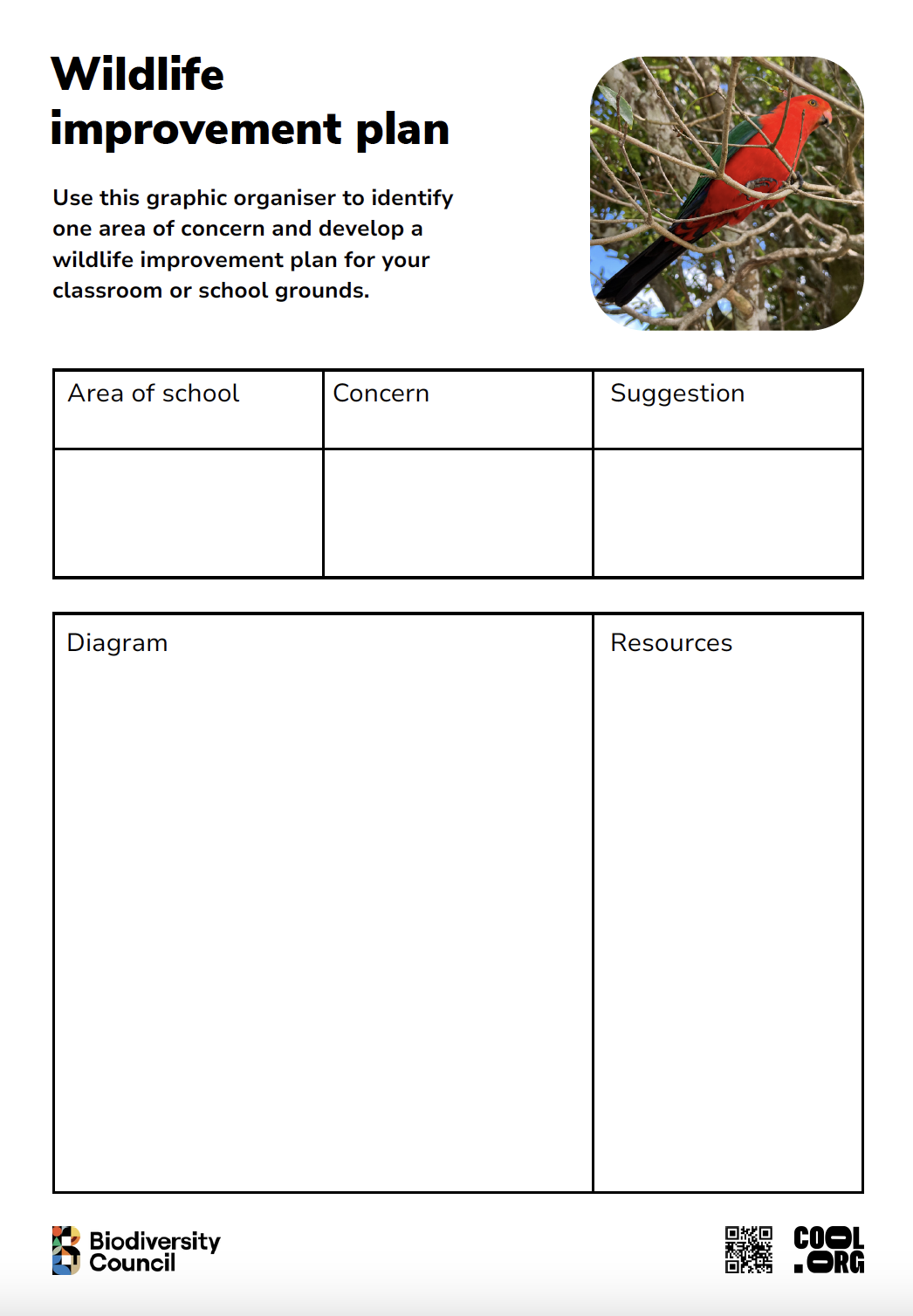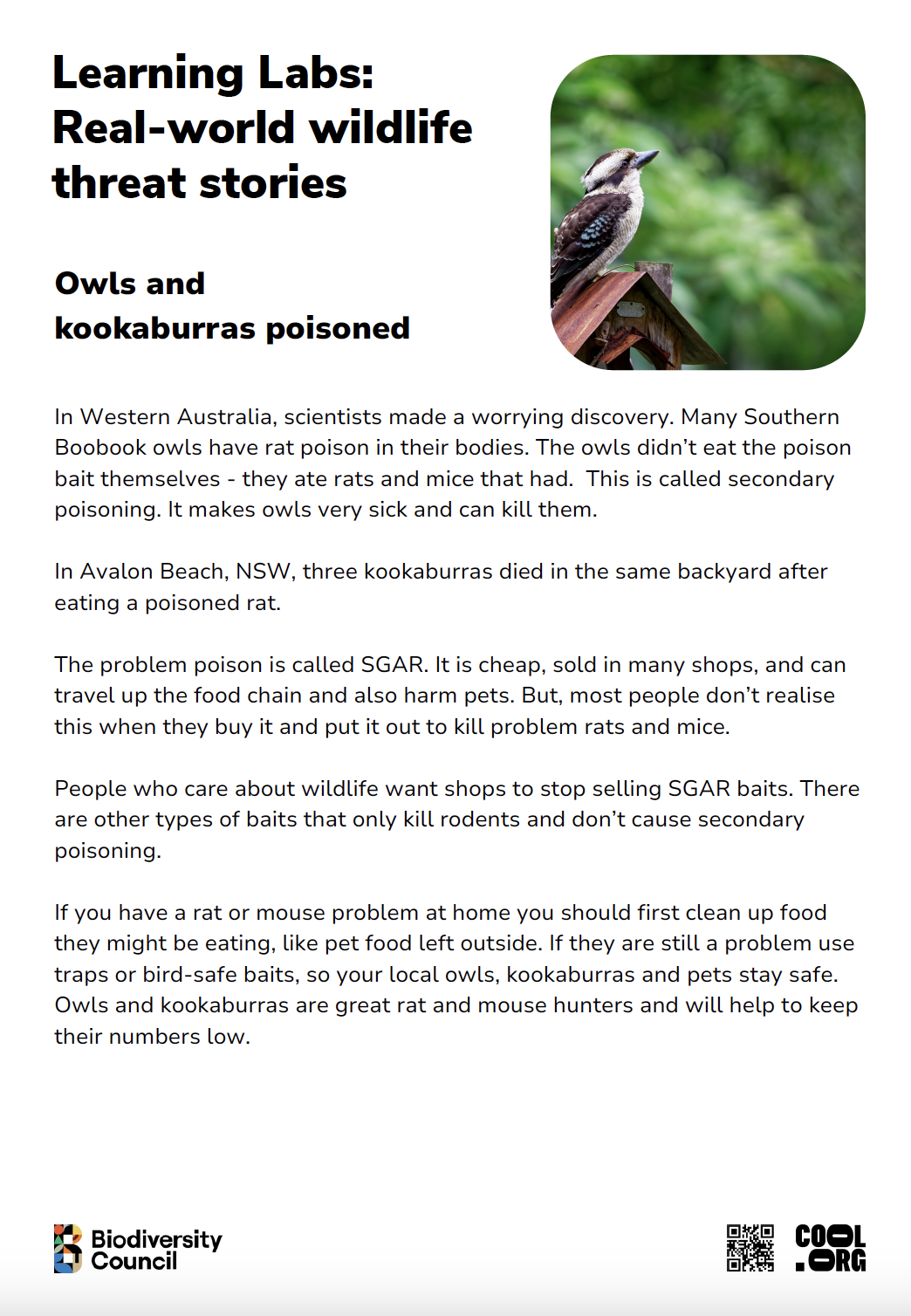Lesson summary
Students will conduct an area audit of their school to identify places or features that support wildlife and those that may threaten it. Using real-world examples, they will explore how everyday human activities affect habitats and food chains, and will share their findings through interactive learning lab presentations. Students will identify a local concern for wildlife and work together to design a Wildlife Improvement Plan for the class to consider as a future project.
Learning intentions
Students will:
- identify everyday threats to biodiversity in their local environment
- develop a plan to make their school or home safer for wildlife.
Success criteria
Students can:
- recognise how items like certain rat baits, pets or plastic harm native species
- suggest and share actions to reduce these threats.
Lesson guides and printables
Curriculum links
Select your curriculum from the options below.
Lesson details
Skills
This lesson is designed to build students’ competencies in the following skills:
- creative thinking
- critical thinking
- collaboration
- communication
- cultural understanding
- problem solving
- prototyping
Curriculum Mapping
Australian Curriculum (v9.0) content description:
Year 3, Science
Students learn to:
- compare characteristics of living and non-living things and examine the differences between the life cycles of plants and animals (AC9S3U01)
- examine how people use data to develop scientific explanations (AC9S3H01).
Year 4, Science
Students learn to:
- explain the roles and interactions of consumers, producers and decomposers within a habitat and how food chains represent feeding relationships (AC9S4U01)
- examine how people use data to develop scientific explanations (AC9S4H01).
Relevant parts of Year 3 Science achievement standards: Students classify and compare living and non-living things and different life cycles. They describe how people use data to develop explanations.
Relevant parts of Year 4 Science achievement standards: Students identify the roles of organisms in a habitat and construct food chains. They explain the role of data in science inquiry.
NSW Syllabus outcomes: Stage 2
A student:
- compares features and characteristics of living and non-living things (ST2-4LW-S).
General capabilities: Critical and Creative Thinking, Ethical Understanding, Literacy, Numeracy, Personal and Social Capability
Cross-curriculum priority: Aboriginal and Torres Strait Islander Histories and Cultures, Sustainability
Level of teacher scaffolding: High - monitoring of safety during outdoor auditing and facilitation of discussions
UN Sustainable Development Goals
Target 4.7: By 2030, ensure that all learners acquire the knowledge and skills needed to promote sustainable development, including, among others, through education for sustainable development and sustainable lifestyles, human rights, gender equality, promotion of a culture of peace and non-violence, global citizenship and appreciation of cultural diversity and of culture’s contribution to sustainable development.
Resources Required
- Activity sheet - Wildlife Improvement Plan
- Factsheet - Learning Lab Real-World Stories
- Factsheet - Learning Lab Real-World Stories SUPPORT
- whiteboard
Additional Info
This lesson was created in collaboration with The Biodiversity Council.
Special thanks to our content partner, The Conversation and to The Garry White Foundation, The Hugh D. T. Williamson Foundation, Wedgetail and The James Kirby Foundation for their generous financial support.





Welcome back!
Don't have an account yet?
Log in with:
Create your free Cool.org account.
Many of our resources are free, with an option to upgrade to Cool+ for premium content.
Already have an account?
Sign up with:
By signing up you accept Cool.org's Terms and Conditions(Opens in new tab) and Privacy Policy(Opens in new tab).